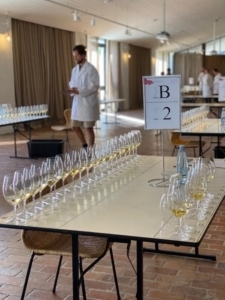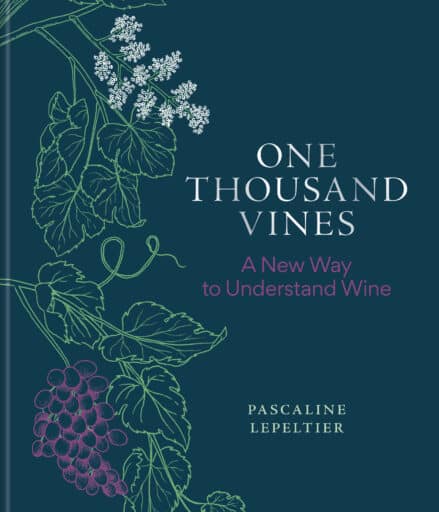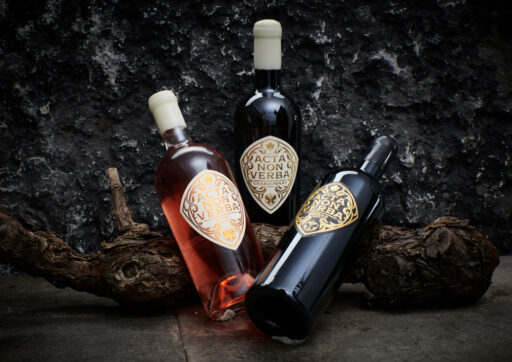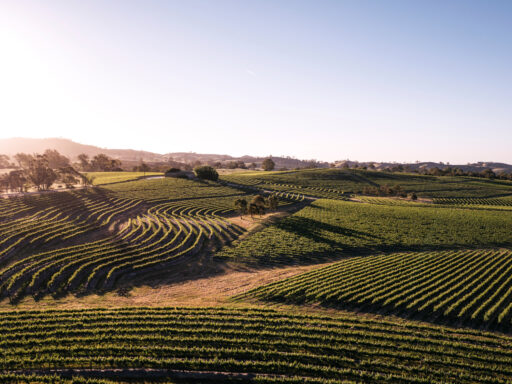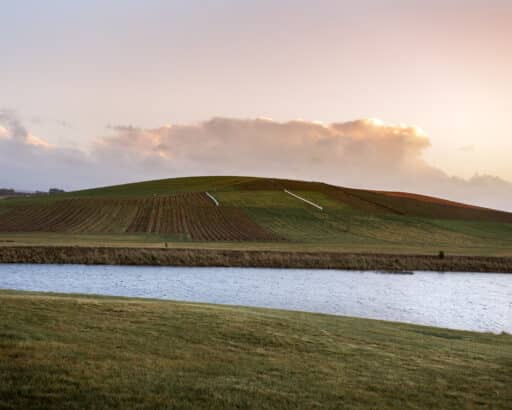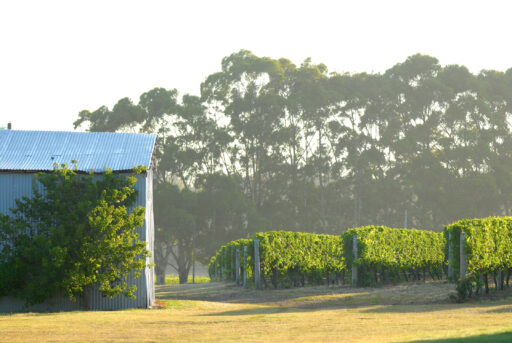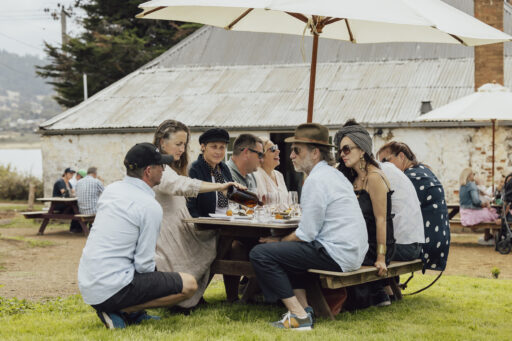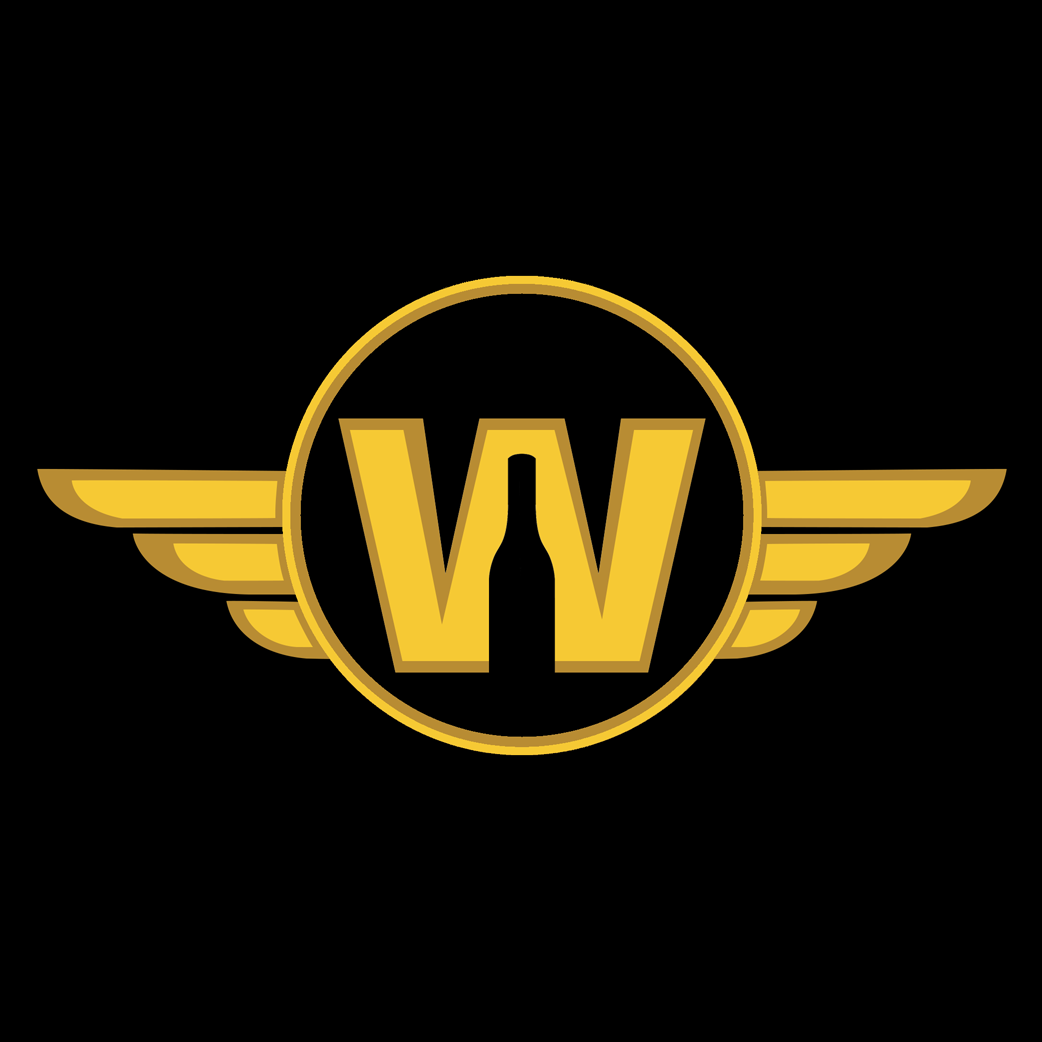Have you ever watched a wine show whizz through your Instagram feed? Endless shots of numbered tables filled with glasses of wine.
I used to think wine shows were festivals of debauchery. Drinking wine all day – you call that work?
After my first wine show I told a very different tale of intense professionalism, pinpoint focus, palate fatigue and physical exhaustion.
I’m here to tell you, they are hard work.
No really!
Day One
8:50am: After a short introduction to the wine show and the COVID-19 precautions, I approach my first flight of wines – 28 ‘Other white varieties and blends’ vintage 2019 and older. This class encompasses anything that doesn’t fit into the broader categories of riesling, chardonnay, pinot gris/grigio or sauvignon blanc. Adrenaline is high and I am a huge fan of alternative varieties so I launch myself into the tasting.
It’s a glamourous job. Large plastic crates filled with kitty litter are scattered around the room, ready to catch wine expelled with force from the mouths of judges. It’s an important skill that my mother would be shocked to know I have perfected – the ability to spit accurately and efficiently towards the floor. Too many tiny sips swallowed by accident (or delight) can quickly lead to a dizzy blur of an afternoon. And that’s not fair to the wines.
While there are different approaches to judging, commonly a panel of 3 judges and 2 associate (junior) judges taste all the wines that have been submitted by producers in a category or ‘class’. Each judge will start at a different place in the line-up to ensure all the wines are viewed with a fresh palate. The first step is to taste relatively quickly through the class, awarding points out of 100. Any particularly good wines are then revisited to confirm they are worthy of being finalists.
The next step is for the judges to compare notes. Scores are reconciled and bronze or silver medals awarded to the better wines. Scoring sits outside normal preferences. Judges are selected for their skill and training to identify high quality wines, whether they are made in a style they like or not. Any wines identified as being worthy of a gold medal are called back for a second round of judging.
After scores were completed for this first class, we had 7 call backs.
The judges leave the room and the call backs are poured in a new random order. Each wine is then retasted and discussed to determine if it is deserving of a gold medal. Once this is finalised there is a vote for the best wine in the class, which then goes through to the trophy judging at the end of the show.
11:20am: We break for a morning tea of sausage rolls – a mainstay of the judging circuit. Coffee is slurped down and chased by lots of water so that taste buds are ready for another round.
11:40am: I re-enter the judging room to a flight of 30 Shiraz, vintage 2018 and older. Shiraz is a tough class; an incredibly important grape in Australia, made in a huge range of styles. There is pressure to make sure we find the great ones through what can seem like an impenetrable wall of tannin. It is so easy in these classes to overlook elegant cool climate styles when faced with lots of seductively spicy oaked examples.
1pm: I duck to the bathroom and catch a glimpse of myself in the mirror. I wish I hadn’t; my lips are dull, there are slight red wine ‘whiskers’ at the corners of my month and my teeth are grey. My tongue is stained a deep reddish black that doesn’t look consistent with sustaining life.
1:30pm: The shortlist is decided. Eight Shiraz are called back to potentially win golds. Discussion ensues and the winner goes through to the final battle.
2pm: Lunch. Finally. Stimulating taste buds with wine sends a signal to your stomach that food is on the way, which leads to a gnawing hunger. The sausage rolls feel like yesterday.
2:40pm: The table is lined with 14 ‘White varieties and blends including chardonnay’ from vintage 2020. It’s a nice way to ease back in with lots of zesty fresh wines. This is followed immediately by eight pinot grigio/gris 2019 and older. The Pinot gris/grigio winner is decided quickly, but the other class requires 6 wines to be called back.
4pm: More Shiraz. Twenty two of them and they’re young’uns from 2019 – the tannins are youthful, grippy. I fight to keep the energy up and give each wine the same amount of attention as the first class of the day. Seven are called back.
6pm: We are done. 130 wines across an intensely focussed eight hours.
But wait, there’s more. Transport to dinner is in 15 minutes. I rush back to my room and inspect my teeth. They look like tombstones – grey with black edges, as if streaked with mould and neglect. Teeth are at their most vulnerable after eight hours of being rinsed in acid, so I spread them lavishly with Tooth Mousse to neutralise the acid while I change. Just before I run out the door I get out my trusty toddler toothbrush, with extra soft bristles, to strike a balance between looking socially acceptable and not scraping away the enamel.
6:30pm: Wine shows have a delicious sideline of social activities, supporting local businesses, and sometimes a few little bonus masterclasses. We head to a local brewery and distillery to launch into a gin tasting followed by Portuguese wine varieties.
Day 2:
I dive into the first class at 8:32am, 32 glasses of Chardonnay a fitting extension to the fresh fruit salad I devoured only 20 minutes earlier.
I am in awe of the laser-like spitting precision of my panel chair, an experienced winemaker. I note that his kitty litter has a neat, round target of staining that I see him mark repeatedly from up to two metres away.
The day progresses in much the same way as the first. We conclude at 5:15 after eight hours of tasting covering 142 glasses of wine, and a total of 24 varieties.
The small plate of cheese and bread on my table looks like it has been attacked by a rat – frequent tiny morsels of bread, chewed mindfully, help scrape tannin from my gums allowing wine to be viewed with fresh perspective. Cubes of cheese dissolved and held in the mouth are said to recalcify teeth – anything is worth a shot.
Beer, I am informed by a fellow judge, is a fine tool to reduce acidity and recalibrate the palate. The scientist in me is ready to argue, but as I sip a lager, the cool welcome relief holds my tongue.
It’s the judges dinner tonight. Each of the judges has selected a magnum, a 1.5 litre bottle of wine, to share. Generosity abounds as we journey through Champagne, German riesling, Provençal rosé, Burgundy, the Southern Rhône, Australian cabernet sauvignon and finish in Portugal. The knowledge and passion is electric as the wines are considered and savoured. The joy is heightened by the fact that the lockdowns stole this simple and great pleasure, talking about wine with other devotees.
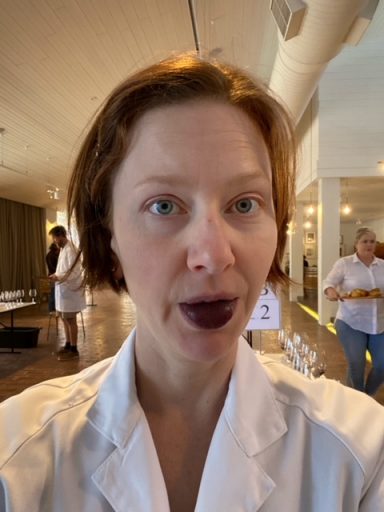
Day 3:
Trophy day. With fresh palates, the best of the best are retasted to decide the winners of the variety and overall trophies. With only 17 wines to view, some of which are revisited several times in different categories, the vibe is relaxed and jubilant. There is relief in seeing that the wines are all exceptional. We did a good job.
By 10am we are done. I inhale the country air one last time as I drive slowly down the vineyard-lined road. The sadness that this beautiful experience is over is balanced by the elation of being part of this gleaming little snapshot in wine history.
Wine shows are hard work, but they are also a gloriously enriching reminder of why I am so committed to wine in an industry often marred by politics, natural disasters and tenuous financial stability. This kind of tasting is developed through years of work, tens of thousands of hours of learning and working with wine. It requires a humbleness, a willingness to admit you ‘missed’ identifying a great wine on first glance, an ability to look afresh at a new line-up without preconceptions or judgement.
Behind every glass is team of people working alongside the ruthlessness of nature, to craft a wine that is the best representation of that year and their little patch of the universe. All I had to do was taste it.

